Borrelia burgdorferi elicited-IL-10 suppresses the production of inflammatory mediators, phagocytosis, and expression of co-stimulatory receptors by murine macrophages and/or dendritic cells
- PMID: 24367705
- PMCID: PMC3868605
- DOI: 10.1371/journal.pone.0084980
Borrelia burgdorferi elicited-IL-10 suppresses the production of inflammatory mediators, phagocytosis, and expression of co-stimulatory receptors by murine macrophages and/or dendritic cells
Erratum in
- PLoS One. 2014;9(1). doi:10.1371/annotation/2ce59bc4-fcf0-498f-86f0-376432428bf4
- PLoS One. 2014;9(1). doi:10.1371/annotation/680090aa-3e1b-4135-94d6-8082c09180d4
Abstract
Borrelia burgdorferi (Bb) is a tick-borne spirochete that is the causative agent for Lyme disease. Our previous studies indicate that virulent Bb can potently enhance IL-10 production by macrophages (MØs) and that blocking IL-10 production significantly enhances bacterial clearance. We hypothesize that skin-associated APC types, such as MØs and dendritic cells (DCs) are potent producers of IL-10 in response to Bb, which may act in autocrine fashion to suppress APC responses critical for efficient Bb clearance. Our goal is to delineate which APC immune functions are dysregulated by Bb-elicited IL-10 using a murine model of Lyme disease. Our in vitro studies indicated that both APCs rapidly produce IL-10 upon exposure to Bb, that these levels inversely correlate with the production of many Lyme-relevant proinflammatory cytokines and chemokines, and that APCs derived from IL-10(-/-) mice produced greater amounts of these proinflammatory mediators than wild-type APCs. Phagocytosis assays determined that Bb-elicited IL-10 levels can diminish Bb uptake and trafficking by MØs, suppresses ROS production, but does not affect NO production; Bb-elicited IL-10 had little effect on phagocytosis, ROS, and NO production by DCs. In general, Bb exposure caused little-to-no upregulation of several critical surface co-stimulatory markers by MØs and DCs, however eliminating Bb-elicited IL-10 allowed a significant upregulation in many of these co-stimulatory receptors. These data indicate that IL-10 elicited from Bb-stimulated MØs and DCs results in decreased production of proinflammatory mediators and co-stimulatory molecules, and suppress phagocytosis-associated events that are important for mediating both innate and adaptive immune responses by APCs.
Conflict of interest statement
Figures

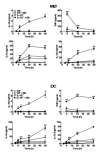
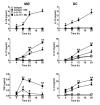
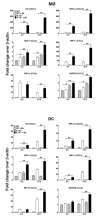
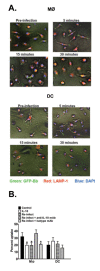
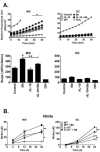
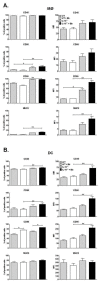
Similar articles
-
MicroRNA-146a provides feedback regulation of lyme arthritis but not carditis during infection with Borrelia burgdorferi.PLoS Pathog. 2014 Jun 26;10(6):e1004212. doi: 10.1371/journal.ppat.1004212. eCollection 2014 Jun. PLoS Pathog. 2014. PMID: 24967703 Free PMC article.
-
IL-10 deficiency promotes increased Borrelia burgdorferi clearance predominantly through enhanced innate immune responses.J Immunol. 2006 Nov 15;177(10):7076-85. doi: 10.4049/jimmunol.177.10.7076. J Immunol. 2006. PMID: 17082624
-
Different patterns of expression and of IL-10 modulation of inflammatory mediators from macrophages of Lyme disease-resistant and -susceptible mice.PLoS One. 2012;7(9):e43860. doi: 10.1371/journal.pone.0043860. Epub 2012 Sep 14. PLoS One. 2012. PMID: 23024745 Free PMC article.
-
Actin-Dependent Regulation of Borrelia burgdorferi Phagocytosis by Macrophages.Curr Top Microbiol Immunol. 2017;399:133-154. doi: 10.1007/82_2016_26. Curr Top Microbiol Immunol. 2017. PMID: 27744511 Review.
-
Phagosomal TLR signaling upon Borrelia burgdorferi infection.Front Cell Infect Microbiol. 2014 May 20;4:55. doi: 10.3389/fcimb.2014.00055. eCollection 2014. Front Cell Infect Microbiol. 2014. PMID: 24904837 Free PMC article. Review.
Cited by
-
MicroRNA-146a provides feedback regulation of lyme arthritis but not carditis during infection with Borrelia burgdorferi.PLoS Pathog. 2014 Jun 26;10(6):e1004212. doi: 10.1371/journal.ppat.1004212. eCollection 2014 Jun. PLoS Pathog. 2014. PMID: 24967703 Free PMC article.
-
The Functional Difference of Dendritic Cells in HBeAg Negative Chronic Hepatitis B Patients with Three Different Spleen Deficiency Syndromes and the Therapeutic Evaluation of Chinese Medicine Intervention Based on Syndrome Differentiation.Evid Based Complement Alternat Med. 2014;2014:802402. doi: 10.1155/2014/802402. Epub 2014 Jun 29. Evid Based Complement Alternat Med. 2014. PMID: 25093028 Free PMC article.
-
The Brilliance of Borrelia: Mechanisms of Host Immune Evasion by Lyme Disease-Causing Spirochetes.Pathogens. 2021 Mar 2;10(3):281. doi: 10.3390/pathogens10030281. Pathogens. 2021. PMID: 33801255 Free PMC article. Review.
-
Macrophage Polarization during Murine Lyme Borreliosis.Infect Immun. 2015 Jul;83(7):2627-35. doi: 10.1128/IAI.00369-15. Epub 2015 Apr 13. Infect Immun. 2015. PMID: 25870230 Free PMC article.
-
Innate Immune Memory to Repeated Borrelia burgdorferi Exposure Correlates with Murine In Vivo Inflammatory Phenotypes.J Immunol. 2020 Dec 15;205(12):3383-3389. doi: 10.4049/jimmunol.2000686. Epub 2020 Nov 9. J Immunol. 2020. PMID: 33168577 Free PMC article.
References
Publication types
MeSH terms
Substances
Grants and funding
LinkOut - more resources
Full Text Sources
Other Literature Sources
Medical
Molecular Biology Databases
Miscellaneous

